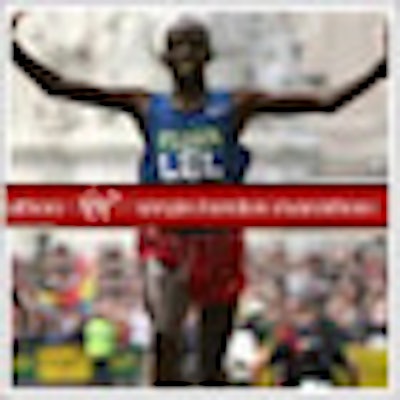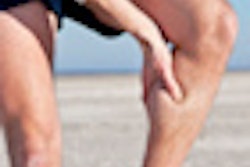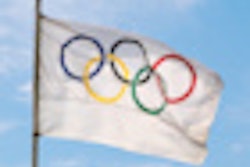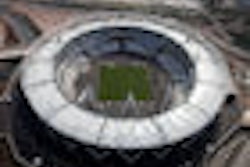
LONDON (Reuters) - When London marathon medical director Sanjay Sharma was called to attend someone who had collapsed with suspected sudden cardiac arrest a mile from the finish line last month, he expected to find a man in his seventies.
"I had to hide my horror as I saw a young, athletic woman," he says. "I had to ... compose myself for a few seconds before we started resuscitation."
Lying on the ground was 30-year-old Claire Squires, whose sudden death, along with those of Italian footballer Piermario Morosini and Norwegian Olympic swimmer Alexander Dale Oen, has drawn fresh attention to shocking heart problems that bring down young, fit people at the top of their game.
The case of English Premier League footballer Fabrice Muamba, who collapsed on the pitch in front of a stadium packed with spectators last month, has similarly focused minds.
Sharma, who was speaking at a sports science conference in London ahead of the 2012 Olympic Games when an estimated 10,000 athletes will be pushing themselves to the limit in the British capital, urged health professionals to be vigilant.
"Something should be done, if we are ... encouraging athletes to push themselves like that," he said. "We protect their musculoskeletal system, we protect their brains, we protect their nutritional status, so why can't we protect their hearts?"
University College London sports scientist Richard Weiler says the main problem is that sudden cardiac death (SCD) and sudden cardiac arrest (SCA) are still poorly understood.
"Each young athletic life lost to SCD or blighted by a sudden cardiac arrest is a powerful reminder that despite our growing knowledge, we still lack many answers to basic questions about these afflictions," wrote Weiler and a team of other sports science experts in the British Journal of Sports Medicine (BJSM).
Better Data
One of the most obvious knowledge gaps is in the numbers. Experts say SCD is rare, affecting just a handful of people out of every 100,000, but it also appears to be more common in athletes than in the general population.
Yet these data come with their own health warning -- most of them are collected from media reports of high profile sporting deaths. There are no proper registries to collect numbers either within a specific sport or country, or cross-border and cross-discipline.
For the best clues, experts point to one of the largest studies on SCD conducted in the United States between 2004 and 2008 in the National Collegiate Athletic Association (NCAA).
It found that SCD is over three times more common in African-Americans than Caucasians, but this varied greatly across sports.
In American football, SCD rates are four times higher in Caucasians than African-Americans, and in soccer there were no cardiac events recorded during the five-year period.
Having searched this and other scientific literature on sudden deaths in sport, experts writing in the BJSM -- including sports scientists from the English Football Association, the London-based Royal Ballet, and world soccer governing body FIFA's Medical Assessment and Research Center in Switzerland -- say there are far too many questions unanswered.
"There's so much we don't know," Weiler said in a telephone interview. "We don't know what triggers sudden cardiac death. We don't understand the risks in different sports, we don't understand whether race and genetics have an impact, and we don't know why many cases of sudden cardiac death remain unexplained.
Widespread Screening?
Though these deaths are sudden and unexpected, Sharma, who is also a consultant cardiologist at St George's Hospital in London, said most heart specialists have tools to diagnose the conditions that cause them, pinpointing those most at risk.
They are usually caused by hereditary electrical or structural faults of the heart that show up in heart scans or in family history, he said.
This leads some sports scientists to say more widespread screening may be the answer.
FIFA recommends cardiac screening and sets it as a requirement for players in teams taking part in its tournaments, but there are no set rules across sports or borders.
Sharma cites data from the Veneto region of Italy, which suggest a program that screens athletes every year and bans people with worrying conditions from taking part in competitive sport, has cut the number of sudden cardiac deaths in athletes by 90% -- from 3.6 per 100,000 person-years in 1979/1980 to 0.4 per 100,000 person-years in 2003/2004.
But the Italian program disqualified 2% of all athletes, leading critics to say that for every one death prevented, around 1,000 athletes are needlessly banned from competing in a sport they love.
Screening is also expensive, raising the question of whether it is cost-effective for such a rare problem.
"You tend to get lots of false positives, and that means you can create unnecessary anxiety and worry about the results," Weiler said. "And there are also people who slip through the net. We don't really understand what we're looking for yet."
By Naomi O'Leary and Kate Kelland
SOURCE: http://bit.ly/L1SdwW
Br J Sports Med 2012.
Last Updated: 2012-05-14 13:25:27 -0400 (Reuters Health)
Copyright © 2012 Reuters Limited. All rights reserved. Republication or redistribution of Reuters content, including by framing or similar means, is expressly prohibited without the prior written consent of Reuters. Reuters shall not be liable for any errors or delays in the content, or for any actions taken in reliance thereon. Reuters and the Reuters sphere logo are registered trademarks and trademarks of the Reuters group of companies around the world.


















